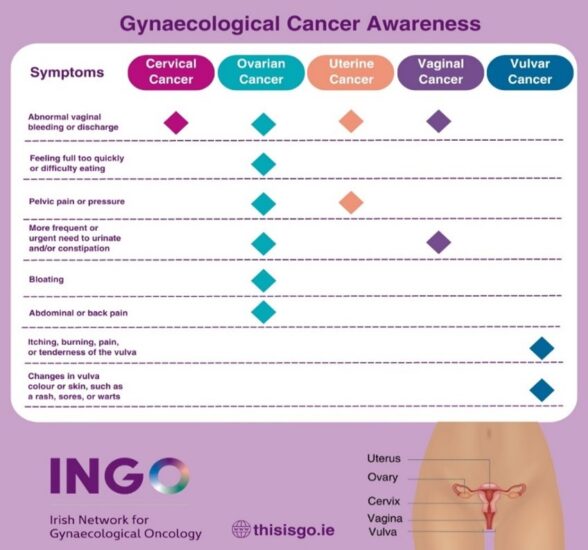The Myth that Cervical Screening Checks for All Gynecological Cancers
By Dr. Sharon O’TooleResearch Fellow at the School of Medicine, Trinity College Dublin and Trinity St. James Cancer Institute, Ireland
Editor’s note: This is part of a series of informational blogs by our working group members for our 2025 Awareness Campaign.
Cervical cancer is one of five gynecological cancers; vulva, vaginal, cervical, uterine (also known as endometrial) and ovarian. Cervical cancer is a preventable disease and is the only gynecological cancer for which a screening test exists. Cervical screening is designed to detect abnormal cell changes in the cervix, which may develop into cervical cancer over time if left untreated. Cervical screening is not a test for cancer, it's a test to see if someone is at risk of developing cervical cancer. There is a common misconception that cervical screening checks for all gynecological cancers.
Research in Ireland commissioned by the Irish Network of Gynaecological Oncology (INGO) and supported by Breakthrough Cancer Research highlights the misconceptions that exist surrounding cervical screening, showing that one in three women in Ireland (34%) mistakenly believe that cervical screening checks for all five gynecological cancers (https://isgo.ie/ingo-outputs/). The INGO are a voluntary network of over 30 of Ireland’s foremost gynecological cancer campaigners, researchers and patient advocates. Their aim is to raise awareness of gynecological cancers in Ireland. Their World Gynecological Oncology (GO) Day awareness campaign highlights symptoms of gynecological cancers but also dispels the myths that exist, particularly around screening.
It is important to highlight that not every country has a national cervical screening program, so it is even more important to be aware of symptoms. According to the World Health Organization, approximately 30% of member states do not have a national cervical screening program (https://apps.who.int/gho/data/view.main.UHCCERVICALCANCERv). Screening roll-out is poorest in low- and middle-income countries where disease burden is highest (1). Cytology is the most common screening test used but many countries are now moving to the more sensitive Human Papillomavirus (HPV) based test (1), again this is a limitation for low resource countries.
While it is extremely important that women choose to go for cervical screening when they are invited, it is also essential that they never ignore symptoms. Even if someone has had a normal screening test result, it is important to be aware of all five gynecological cancers, and their symptoms.

References
Bruni L, Serrano B, Roura E, Alemany L, Cowan M, Herrero R, Poljak M, Murillo R, Broutet N, Riley LM, de Sanjose S. Cervical cancer screening programmes and age-specific coverage estimates for 202 countries and territories worldwide: a review and synthetic analysis. Lancet Glob Health. 2022 Aug;10(8):e1115-e1127. doi: 10.1016/S2214-109X(22)00241-8. PMID: 35839811; PMCID: PMC9296658.



